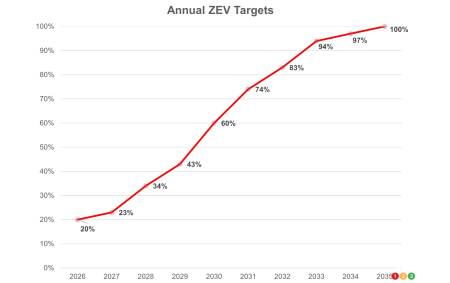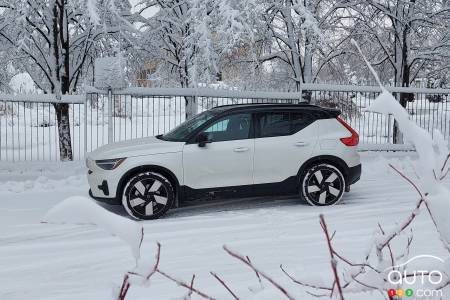The Canadian government has announced the new regulations concerning its targets for electric vehicle sales in the country between now and 2035.
At a press conference held today (Tuesday), Canada's Minister of the Environment and Climate Change, Steven Guilbeault, announced the new government standards. According to Guilbeault, the new standards will make electric vehicles more affordable and increase the number of charging stations. It remains to be seen how this approach will bring prices down. Time will tell.
We already knew the government was aiming for 2035 to ban the sale of gasoline-powered vehicles in Canada. We now know the steps that will lead the country there.

The first step is 2026. At that point, 20 percent of all light vehicles (cars, SUVs, pickups and vans) sold will have to be zero-emission.
In 2030, the required percentage climbs to 60 percent, on the way to 100 percent in 2035. In between, the government has also provided targets for years in between – 23 percent in 2027, 34 percent in 2028 and 43 percent in 2029.
The 2026 target is clearly attainable, especially considering that in Quebec and British Columbia, the 20 percent threshold has already been reached. Nationally, Canada sat at 13.3 percent in the third quarter of this year, up from 10.5 percent in the second quarter.
While a slowdown in demand for electric vehicles has been observed in some parts of the world, this is not yet the case in Canada.
How it works
In a nutshell, manufacturers will earn, lose and accumulate credits. These are worth $20,000 for each vehicle with an all-electric range of at least 80 km. This will be calculated on the basis of sales targets, whether met, exceeded or not met at all.
Manufacturers will have to pay a credit for each vehicle that does not sell below their target. The good news, especially for those carmakers with electric models now, is that they can start accumulating credits now through the sale of electric vehicles before 2026, as well as through the construction of fast-charging stations.
Companies will only be able to offset 10 percent of their total compliance.

What about PHEVs?
The government will limit the number of plug-in ICE models for each automaker per year. Plug-in vehicles with an electric range of at least 80 km will have the same value in credits as all-electric or fuel cell (hydrogen) vehicles.
A PHEV model offering a range of between 35 and 79 km will give the automaker full or partial credits, depending on the year of the model and the number of seats.
A spokesman for the government said that EVs should be available at prices similar to those of gas-powered vehicles by the end of this decade, and then become cheaper.
That would be good, be it’s worth remembering that forecasts in 2018 had prices for EVs and ICE vehicles hitting by the end of 2023. There are in fact some cases where that is in fact true now, when it comes to more affordable vehicles, the differences are still significant.

The reaction
Automakers are not necessarily happy with all the measures announced. Car companies and their dealers argue that EVs are still too expensive for the average consumer. Here are a couple of reactions:
“Canadians want to know that they can afford, use and recharge their electric vehicles in a way that suits their different lifestyles and geographical requirements before making one of the most important purchasing decisions of their lives. What's more, with today's high interest and inflation rates having a significant impact on consumers' affordability, many can't afford to buy electric vehicles, as evidenced by the increasing inventory on our members' lots.”
- Tim Reuss, the head of the Canadian Automobile Dealers Association
And this:
“Today is about determining whether or not the government has provided realistic pathways to achieve aggressive ZEV sales targets that automakers will bear the consequences, regardless of whether appropriate infrastructure is built out, purchase incentives are maintained, consumer interest is sustained or external supply chain shocks limit or constrain ZEV production… The current economic and geopolitical headwinds mean that this transition to zero emission vehicles will be both challenging and uneven – with automakers ultimately dealing with the consequences of factors outside of their control.”
- David Adams, President and CEO, Global Automakers of Canada
It’s important to note that right now, sales of EVs continue to rise in Canada. And manufacturers have been happy to accept significant subsidies to manufacture batteries and electric components in this country, a sign that they are committed to the electrification path.
For consumers, meanwhile, one of the most important considerations continues to be the effect on their ability to buy a vehicle without breaking the bank. According to Automotive News, Scotiabank has calculated that vehicle prices will have to fall by around a third to be affordable for middle-income households, and by half for low-income households.



